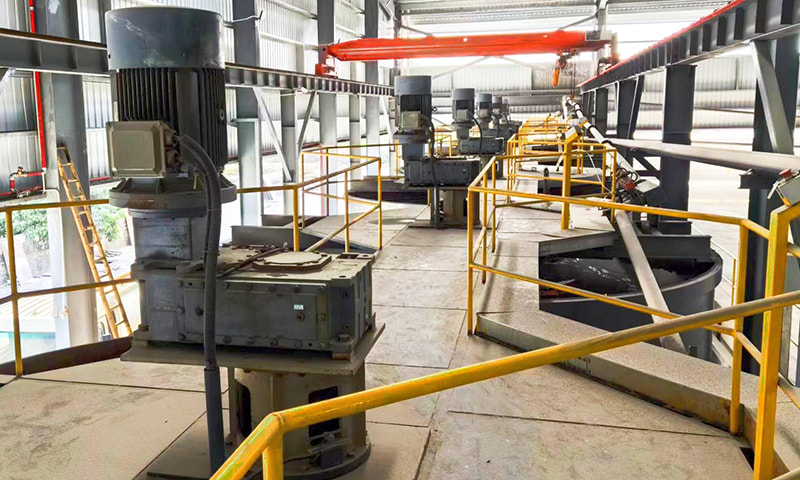The global construction industry increasingly relies on sustainable and lightweight building materials. Among these, autoclaved aerated concrete (AAC) blocks have gained prominence due to their thermal insulation, fire resistance, and lightweight properties. Central to meeting market demand is the AAC block production line, a sophisticated system integrating multiple processes to ensure efficiency, quality, and consistency in block manufacturing.
High-Efficiency Automation in AAC Block Production Line
The AAC block production line manufacturers have been focusing on automating key stages of production, from raw material preparation to curing. Automation not only reduces manual labor but also ensures uniformity in block density, size, and strength. Modern production lines integrate advanced control systems, precise mixers, and cutting technologies that maintain high throughput while minimizing material waste.
| Production Stage | Automated Equipment | Key Benefit |
|---|---|---|
| Raw Material Preparation | Precision Mixer, Conveying System | Uniform slurry consistency |
| Molding & Forming | Forming Machine with PLC Control | Accurate block dimensions |
| Cutting | Multi-Blade Cutting Machine | High precision and reduced manual adjustment |
| Curing | Autoclave with Automatic Steam Control | Optimized thermal curing, consistent strength |
| Packing & Transport | Automated Packing System | Faster handling, reduced labor costs |
Technological Advancements and Equipment Efficiency
One of the notable features of a modern AAC block production line is its integrated technological setup. AAC block production line manufacturers have invested in precision machinery that automates critical processes:
Advanced Mixing Systems – Ensure homogeneous raw material slurry, reducing inconsistencies that could affect block performance.
PLC-Controlled Forming Machines – Deliver consistent block dimensions, which is vital for construction projects requiring uniformity.
Multi-Blade Cutting Technology – Reduces cutting errors and minimizes material wastage.
Automated Autoclaves – Precisely control pressure and temperature during curing, guaranteeing high-strength blocks.
These advancements enhance the line’s overall efficiency, allowing manufacturers to meet high demand while maintaining quality standards. Moreover, energy-efficient designs reduce operational costs, an increasingly critical factor in sustainable production.
Product Quality and Standardization
The quality of AAC blocks produced largely depends on the precision of the production line. Automated AAC block production lines improve quality control by minimizing human errors and variations in block density. Standardization ensures that each block meets thermal insulation, fire resistance, and load-bearing requirements, making it suitable for both residential and commercial construction projects.
| Block Characteristic | Standardized Range | Benefit |
|---|---|---|
| Density | 550–650 kg/m³ | Lightweight yet strong |
| Compressive Strength | 3–6 MPa | Suitable for load-bearing walls |
| Thermal Conductivity | 0.11–0.18 W/m·K | Energy-efficient buildings |
| Fire Resistance | Up to 4 hours | Enhanced safety |
| Dimension Accuracy | ±1 mm | Facilitates faster construction |
Energy Efficiency and Sustainability
Sustainability has become a core focus in construction material manufacturing. Modern AAC block production line manufacturers implement energy-saving technologies in autoclaving, mixing, and cutting stages. Steam recycling systems, optimized motor usage, and thermal insulation within autoclaves reduce energy consumption significantly. Additionally, AAC blocks themselves contribute to energy-efficient buildings due to their insulating properties, further reinforcing their appeal in green construction projects.
Market Outlook and Adoption Trends
The demand for lightweight and eco-friendly construction materials continues to rise globally. The AAC block production line is central to supplying this growing market efficiently. Automation and energy efficiency attract developers seeking to balance cost, quality, and sustainability. Furthermore, advancements in equipment design and production line layout allow manufacturers to scale operations without compromising product integrity.
| Market Factor | Impact on Production | Future Trend |
|---|---|---|
| Urbanization | Increased demand for high-rise buildings | Expansion of production lines |
| Sustainability Policies | Energy-efficient construction mandates | Adoption of green production techniques |
| Labor Shortages | Automation reduces reliance on manual labor | Integration of smart systems |
| Construction Speed | Standardized blocks accelerate construction | Modular production solutions |
Integration of Smart Systems
Recent trends in AAC block production line technology include the integration of IoT and smart control systems. Real-time monitoring of mixing, cutting, and autoclaving processes allows operators to make adjustments remotely, enhancing production efficiency. These smart systems also facilitate predictive maintenance, minimizing downtime and extending the lifespan of key equipment.






